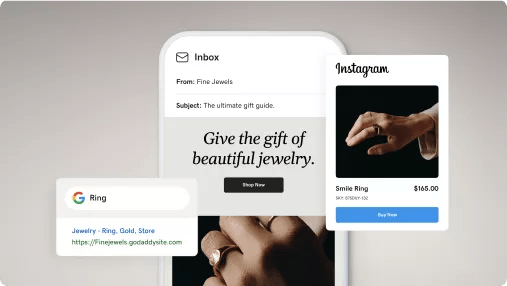Enhance User Experience and Drive Website Traffic With Responsive Internet Layout
In today's digital landscape, where users are accessing websites from a wide range of tools, receptive internet style has actually ended up being more important than ever before. With its capacity to adapt and perfectly adjust to various display dimensions, receptive layout not only enhances individual experience however likewise drives traffic to your internet site.
Why Receptive Website Design Matters
Responsive internet design is a necessary facet of contemporary web advancement because of its capability to ensure optimal customer experience throughout different gadgets and display dimensions. With the proliferation of mobile phones, tablets, and other mobile phones, it has become crucial for web sites to adapt and give smooth performance despite the device being utilized.
The main reason receptive web design matters is that it enables users to have a satisfying and constant browsing experience, no matter of the tool they are using. A responsive site instantly readjusts its style, web content, and format elements to fit the screen size and resolution of the gadget, guaranteeing that users can quickly connect and browse with the internet site with no trouble or irritation.
Moreover, responsive website design additionally plays a significant duty in search engine optimization (SEARCH ENGINE OPTIMIZATION) Internet search engine, such as Google, focus on internet sites that are mobile-friendly and responsive in their search results page. By incorporating responsive style principles, websites can improve their presence and ranking, resulting in increased natural website traffic and possible clients.

Boosting Individual Interaction With Responsive Design
Enhancing user engagement is an essential objective of responsive layout, as it makes sure that users can easily access and interact with site material on any tool. With the boosting use of tablet computers and smart devices, it is crucial for internet sites to adapt to different display sizes and resolutions. Responsive design enables websites to immediately readjust their layout and content to give a seamless customer experience across tools.
One of the major ways receptive design enhances customer engagement is by lowering load times. With a responsive website, customers don't have to await different mobile variations to tons, resulting in much faster accessibility to web content. This better rate leads to higher individual complete satisfaction and urges them to invest even more time on the site.
In addition, receptive style enhances individual involvement by enhancing navigating and user interface (The Ad Firm Web Design). When a web site is created responsively, switches and food selections are optimized for touch interactions, making it easier for individuals to interact and browse with the website on their mobile phones. This instinctive and user-friendly experience maintains individuals involved and motivates them to explore more of the web site
Additionally, receptive layout permits for better material exposure and readability. By adjusting the layout and font style dimensions to various devices, responsive web sites make certain that users can conveniently read and recognize the material. This enhances individual interaction by minimizing the demand for zooming or scrolling to read the text.
Raising Site Website Traffic With Responsive Internet Layout
With the expanding appeal of mobile gadgets, having a website that is receptive to different screen sizes and resolutions is necessary for driving raised web traffic. In today's electronic landscape, users are accessing internet sites from a variety of tools such as smart devices, tablet computers, and computer. Each of these tools has different screen dimensions and resolutions, and if your web site is not developed to adjust to these variants, it can cause an inadequate customer experience and a loss of possible website traffic.
Receptive internet style makes sure that your website looks and operates efficiently across all gadgets. By utilizing versatile grids, liquid photos, and media questions, receptive design enables your web site to immediately adjust its material, format, and navigation to fit any kind of screen size. This suggests that users will have a smooth browsing experience no matter whether they are using a little mobile phone or a huge desktop computer computer system.
Secret Elements of Reliable Receptive Style
Efficient responsive design integrates a number of key aspects that ensure a seamless individual experience across various gadgets. Among these elements is versatile grids and formats. By making use of family member systems like percents instead of taken care of systems like pixels, designers can develop designs that scale and adjust to fit different display dimensions. This permits material to be displayed in a understandable and visually attractive way on any kind of gadget.
An additional vital element is media questions. These enable developers to apply various designs and designs based on the features of the user's gadget, such as display dimension and positioning. By utilizing media queries, developers can optimize the presentation of content for each gadget, making certain that it is understandable and quickly available.
Receptive photos are likewise important in efficient receptive design. Photos that are also big can decrease web page lots times on mobile tools, while images that are too little might appear pixelated on larger screens. By utilizing strategies such as responsive picture resizing and careless loading, designers can make certain that pictures are properly sized and my latest blog post optimized for every device.
Finally, reliable receptive layout includes a mobile-first technique. This indicates focusing on and making web content for mobile gadgets initially, and after that expanding and improving the layout for bigger screens. This approach ensures that the most important material is easily accessible on smaller sized displays, while still giving an abundant experience on larger gadgets.
Finest Practices for Carrying Out Receptive Internet Design
Applying responsive internet layout needs careful factor to consider of different finest techniques to make certain an ideal customer experience throughout various tools. When applying receptive web design., right here are some crucial best practices to follow.
Firstly, it is critical to focus on mobile individuals. With the raising prominence of mobile devices, designing for mobile-first has ended up being essential. Begin deliberately for smaller displays and afterwards considerably enhance the layout for larger displays.

One more essential finest method is to enhance visit this page images for various This Site screen resolutions. Big images can reduce down the packing time of your site, especially on mobile tools with slower connections. Usage responsive images that can be resized based upon the tool's display resolution to boost performance.
In addition, test your site on various tools and display dimensions to make certain a consistent and smooth experience. There are different testing devices offered that can help you identify any kind of concerns and make essential changes.
Last but not least, prioritize functionality and accessibility. Make sure that your site is very easy to browse, with clear and concise material. See to it that your internet site comes to individuals with specials needs and complies with accessibility standards.
Conclusion
To conclude, receptive website design plays a vital duty in improving individual experience and driving website traffic to websites. By adopting responsive layout principles, internet sites can make sure optimal seeing experiences across different devices, leading to boosted user involvement (The Ad Firm Carlsbad). Responsive design can likewise contribute to greater web site web traffic as it enhances search engine rankings and promotes easy sharing of content. Organizations need to concentrate on executing the vital elements and finest methods of receptive style to effectively satisfy the demands of modern customers.
Optimizing individual involvement is a key goal of responsive design, as it makes certain that users can quickly gain access to and communicate with site content on any type of gadget. Receptive layout makes it possible for websites to immediately adjust their format and web content to supply a smooth user experience across tools.
In addition, responsive design improves individual involvement by improving navigation and user interface.Responsive images are also crucial in effective receptive design. By embracing responsive layout principles, web sites can make sure optimum watching experiences throughout different gadgets, leading to enhanced customer engagement.